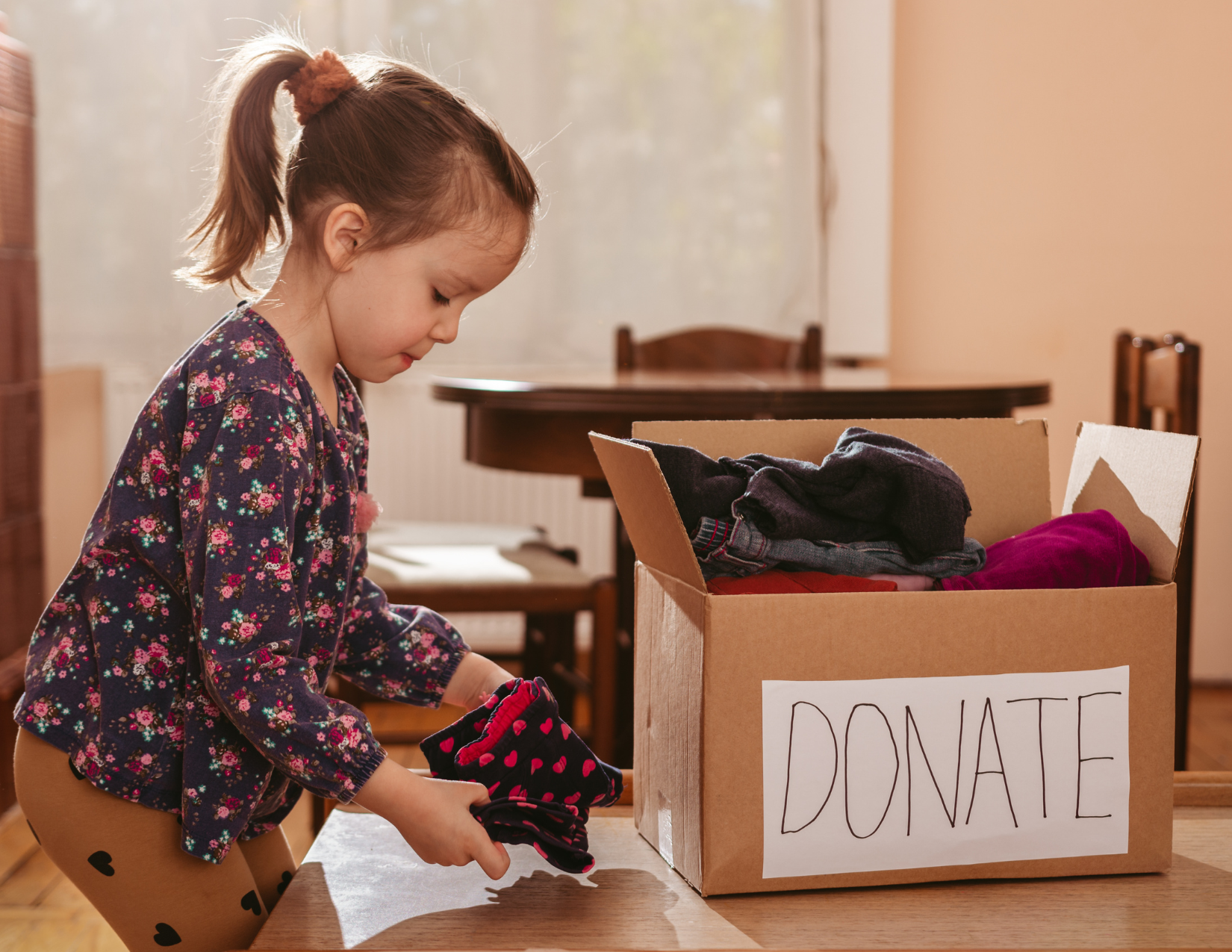7 ways to give back as a family
We know mama, it can be hard to find opportunities to give back. So if you’ve been yearning to say yes to volunteering but have young kids or a full family schedule, this list is for you!
Peek these 7 kid-friendly (and quick!) ways to make a difference:
1. Gleaning at a local farm or farmer’s market
Gleaning is gathering unsold or unused food items from a farm or farmer's market and taking them to your local food pantry. Make it a fun family day at the farmer's market while supporting local vendors. To get started: Reach out to local food pantries or find the information booth at your local farmers market and ask about opportunities for gleaning in your area.
2. Foster a pet
Does it feel like your kids constantly beg to bring home another furry friend? Fostering is an excellent way to grant that wish without the long-term commitment of pet adoption. You can provide pets a cage-free alternative to shelter life while waiting on their forever home. If you don't already have pets in your home, this gives children a chance to tackle pet care responsibilities. Contact your local humane society to learn more about fostering in your home.
3. Help at a local food pantry
With inflation and rising food costs, food pantries are increasingly vital to food stability for many families. Most food pantries allow children as young as eight to help stock shelves, sort items, and pack food for delivery to local shelters. Reach out to a local pantry today to find out more and schedule a date to help.
4. Meals on Wheels
This national organization provides fresh meals to local seniors and homebound individuals with disabilities. Families can deliver meals together to help bridge the hunger gap for local folks in need. Babies and toddlers can join the fun without leaving their car seats. Contact your nearest Meals on Wheels office to learn more.
5. Start a food drive
Kids of all ages can get involved during a food drive. You can partner with your church, school, or a local business, collecting canned goods and non-perishable items that you can then deliver to a local food pantry. Or have kids help you do a pantry clean-out (So. Many. Cans.). They can help check expiration dates to help decide what to keep and share.
6. Start or participate in a neighborhood clean-up
You don't need a formal plan to get together with your community to clean up (though that would be an awesome idea), you can do it on your next walk around the neighborhood! Grab some gloves, and heavy-duty trash bags, then challenge the family to see who can collect the most trash each time you're out. This is also an opportunity to talk about how long things take to break down over time, helping kids learn to be responsible with their waste from a young age.
PRO TIP: Check out Volunteer Match’s “great for kids and teens” filter to find family-friendly events close to you.
7. Donate to Toys for Tots
This national organization provides toys to kids in need. Find your local campaign and other places accepting toy donations on their website. Once you find your local chapter, you can easily donate online by shopping their Amazon wish list. Enlist kids’ help choosing items they want to donate (Bonus: Use it as a sneaky way to find out what they might want on their wish list this holiday season). Toys for Tots only accept new toys, but you can also encourage kids to clean out their room by finding toy items to donate to a local Goodwill or Salvation Army.
Bonus: Volunteer activities without leaving home
In a busy season of life and strapped for time? We get it! Here are some simple ways to get kids involved in giving back without leaving home:
Set up a donation jar in your home for spare change and encourage kids to give a portion of their allowance or a few coins from their piggy bank. Schedule a monthly outing to give to a local food pantry. Find your local food bank through Feeding America.
Make Cards for Hospitalized Kids, where children of all ages can decorate and write greeting cards for kids in the hospital to brighten their day.
Start recycling (if you haven’t already) and use the activity to discuss reusing items, limiting plastics, and other environmental concerns.





